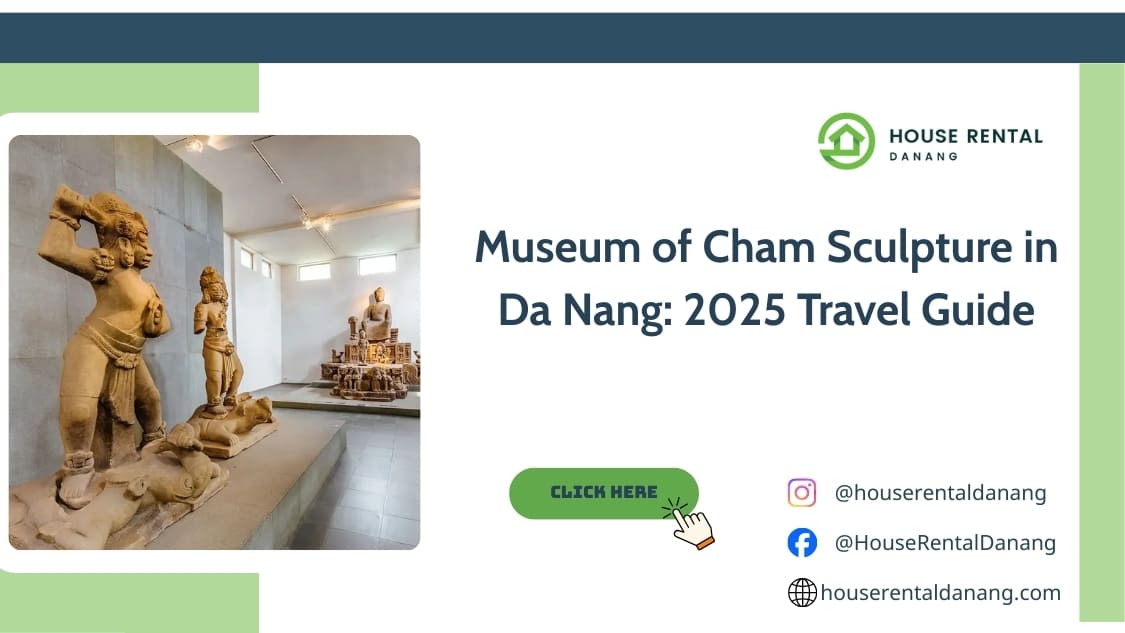
Da Nang is famous for its modern bridges and sandy beaches, but it also houses a treasure trove of ancient history. The Museum of Cham Sculpture in Da Nang is a must-visit destination for anyone looking to understand the soul of Central Vietnam.
Housing the world’s largest collection of Cham artifacts, this museum offers a fascinating glimpse into the lost Champa Kingdom. At HouseRentalDanang.com, we believe that exploring local culture is key to feeling at home in a new city. Here is everything you need to know about this iconic landmark.

A Glimpse into History
Established in 1915 by the French School of the Far East (École française d’Extrême-Orient), the Museum of Cham Sculpture in Da Nang is an architectural gem in itself. The building blends French colonial style with Cham temple elements, creating a serene, open-air atmosphere that perfectly complements the sandstone artworks.
For centuries, the Champa Kingdom ruled Central and Southern Vietnam, leaving behind impressive sanctuaries like My Son. This museum preserves nearly 2,000 artifacts, dating from the 7th to the 15th centuries, telling stories of Hinduism, Buddhism, and fertility cults.
History of the Museum of Cham Sculpture in Da Nang
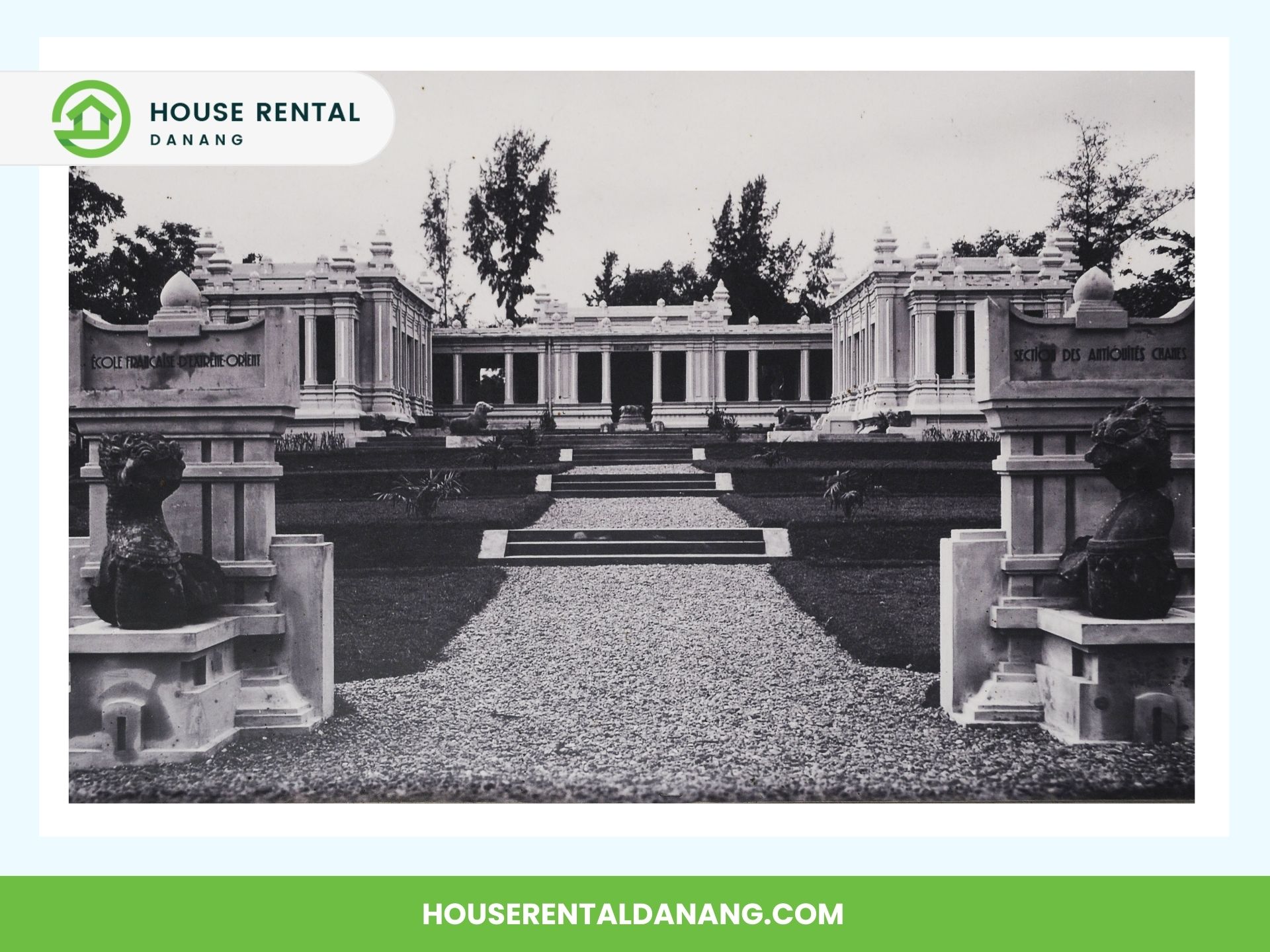
History of the Museum of Cham Sculpture in Da Nang
The Museum of Cham Sculpture was officially established in 1919. However, its roots can be traced back to the early 20th century when French archaeologists began excavating and collecting Cham sculptures in central Vietnam. Recognizing the need for a dedicated institution to preserve and showcase these artifacts, the museum was officially created to highlight the history of the museum of Cham. house and protect these invaluable pieces of history.
Over the years, the Museum in Vietnam has undergone expansions and renovations to accommodate the growing collection, making it a must-see on the list when traveling to Da Nang. The original building, designed by French architects M. Deleval and M. Auclair, incorporated traditional ancient Cham elements into its architecture, creating a unique and visually striking space. Subsequent expansions in the mid-1930s and in 2002 have provided additional exhibition space and modern facilities for visitors.
Architecture of the Museum
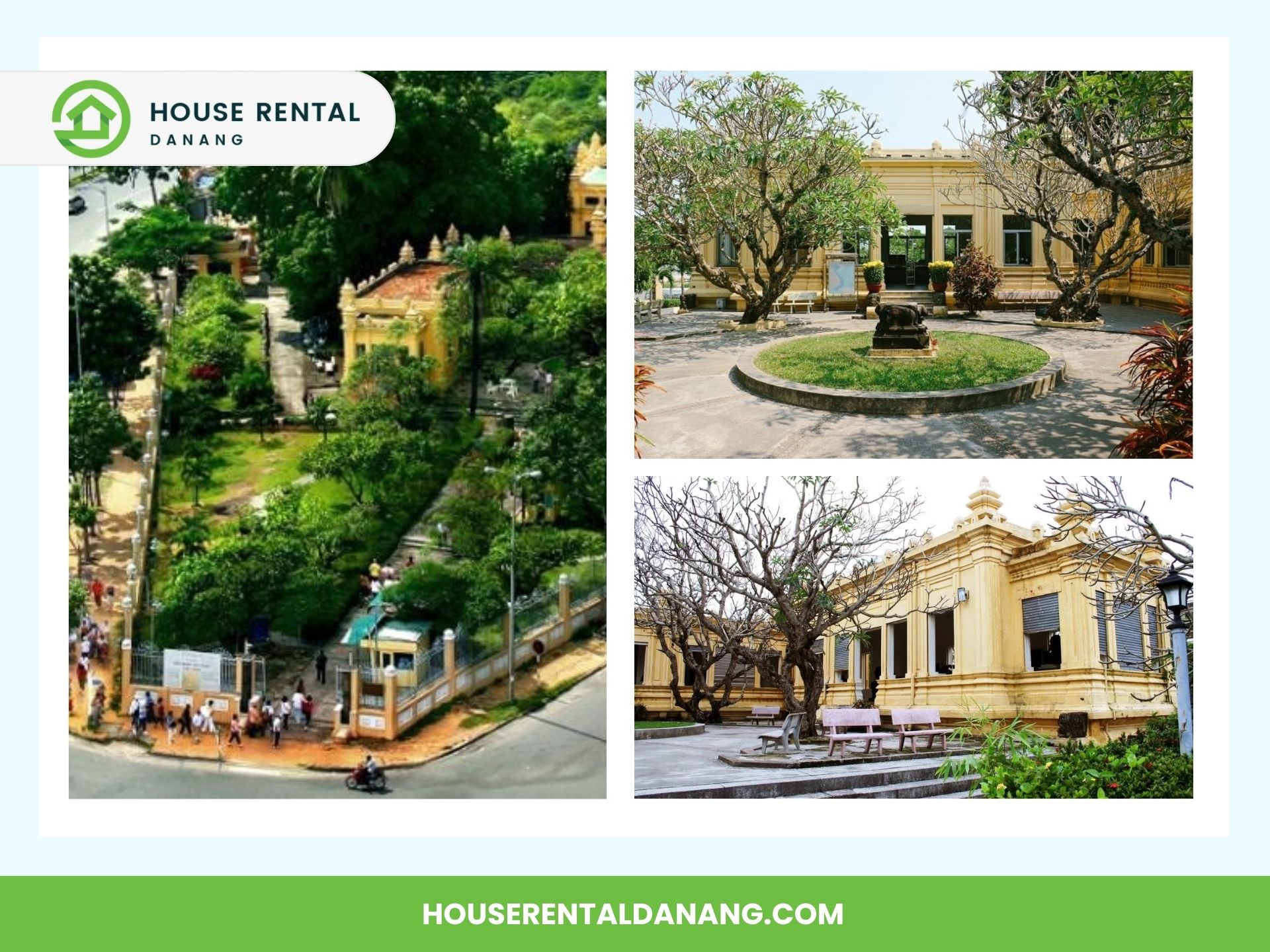
Architecture of the Museum
The Museum of Cham Sculpture stands as a testament to the architectural ingenuity of both the Cham civilization and the French architects who designed the building. The U-shaped hall, inspired by traditional Cham architecture, is a distinctive feature of the museum. The hall overlooks the Han River and provides a captivating backdrop for the beautiful sculptures on display, adding to the allure of traveling to Da Nang.
The recent two-story building, added in 2002, coming into a certain area and the commentaries automatically played when coming, complements the original structure and offers additional space for exhibition rooms in the Museum of Sculpture. exhibitions, storage, a library, a restoration workshop, and staff offices. Efforts have been made to preserve and maintain the original character of the museum while incorporating modern amenities for visitors with cultural artifacts during specific opening hours and was carefully stored in the warehouse.
Exhibitions at the Museum

Exhibitions at the Museum
The Museum of Cham Sculpture showcases a wide range of sculptures and artifacts, including many antique pieces. from various regions and styles of Cham art. Each exhibition offers a unique perspective of the Cham temples on the history and culture of the Cham civilization.
One of the highlights is the Tra Kieu Gallery, part of the Museum of Sculpture, which features sculptures from Tra Kieu attached by temples and towers, an important historical site in central Vietnam. The My Son Sanctuary Gallery showcases artifacts from one of Southeast Asia’s most significant archaeological sites. The Dong Duong Gallery displays sculptures from the Dong Duong relic site, known for its intricate carvings and architectural details.
Other exhibitions include the Thap Mam Gallery, which houses sculptures from Thap Mam Temple – department of archeology, and galleries dedicated to Quang Tri, Quang Binh, Hue, Da Nang, Quang Nam, Quang Ngai, Binh Dinh, and Kon Tum. Each exhibition sits uniquely within the surroundings and offers a unique insight into different aspects of Cham art and culture.
National Treasures
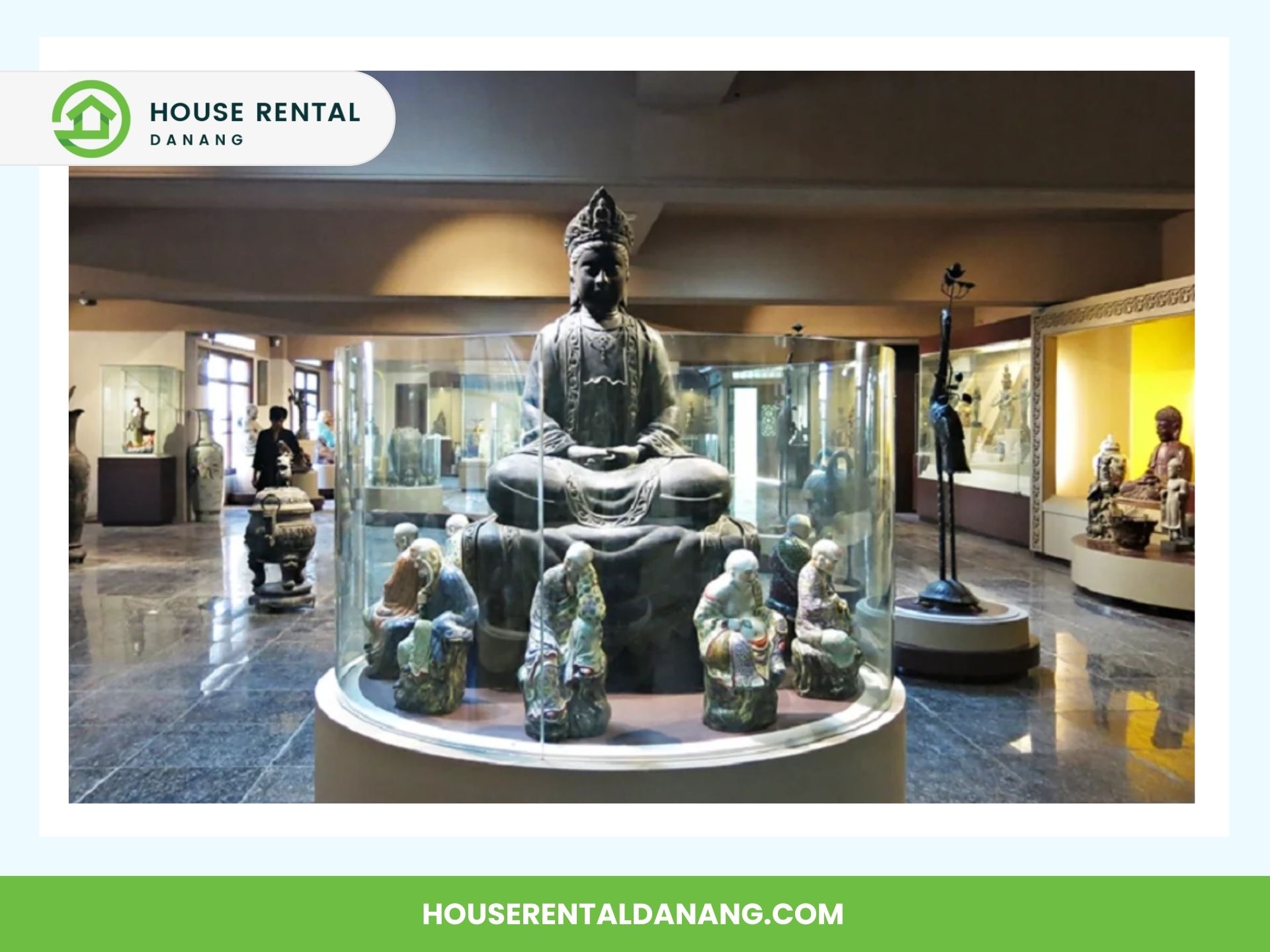
National Treasures
The Museum of Cham Sculpture is home to several national treasures that highlight the craftsmanship and artistry of the ancient Champa civilization. These treasures offer invaluable insights into the religious beliefs, customs, and daily life of the Cham people.
One such treasure is the Tra Kieu Pedestal, which depicts intricate carvings of Hindu gods and mythical creatures. This pedestal is considered one of the finest Tra Kieu altar and an ancient champa kingdom, examples of Cham sculpture in existence. Another notable treasure is the My Son E1 Pedestal, which showcases exquisite carvings that depict scenes from Hindu mythology 5 pm every day and service at least 3 days.
The Dong Duong Pedestal, one of the best ideal destinations of Cham sculpture in total area, is located in this museum. It is another significant artifact in the museum’s collection. It features intricate carvings of gods and goddesses that reflect the religious beliefs and cultural practices of the Cham people. The Statue of Bodhisattva Laskminda-Lokeshvara, also known as Tara Statue, made great contributions by Champa people, is a masterpiece that exemplifies the skill and artistry of Champa sculptors.
Visitor Information
When planning a visit to the Museum of Cham Sculpture, it’s essential to consider practical details such as open to anyone traveling to Da Nanging hours, entrance fees for Francaise, comprehensive services of audio guide, features of Cham and remember to purchase an admission ticket also. The museum of sculpture is open from 7:30 am to 5:00 pm daily (except for Mondays). The entrance fee is 60,000 VND for adults and teenagers above 16 years old.
Visitors are advised to follow certain regulations located at the corner of Bach Dang during their visit to the Cham Museum in Da Nang, ensure the preservation and protection of the artifacts. It is recommended not to touch any sculptures or artifacts on display. Photography is allowed but without flash. Lockers are available for visitors to store large luggage or hand luggage weighing more than 3 kilograms.
Guided tours are available at the museum, providing visitors with in-depth knowledge and insights into the exhibits. Audio guides are also available for those who prefer to explore at their own pace.
How to Get to the Museum
The Museum of Cham Sculpture is conveniently located in central Da Nang, making it easily accessible for visitors. From Da Nang airport, it is approximately 4 kilometers away, and taxis are readily available for transportation. For those arriving by train at Da Nang railway station, it is about 6 kilometers to the museum and need to purchase an admission to enter.
It is also suggested to follow the recommended delaval in step 3, so the visitors staying in Hoi An can reach the museum by taking a taxi or bus from Hoi An to Da Nang. The distance between Hoi An and Da Nang is about 30 kilometers. Public transportation options are also available for those looking for more economical travel options in the group of 5.
Parking facilities are available near the museum for those traveling by private vehicle.
- Book your taxi: https://www.welcomepickups.com/da-nang/taxi
- Book your motorbike tour guide: https://riderly.com/rental-locations/vietnam/da-nang/
- Book your car: https://danangprivatecar.com/danang-car-rental
Things to See and Do Near the Museum
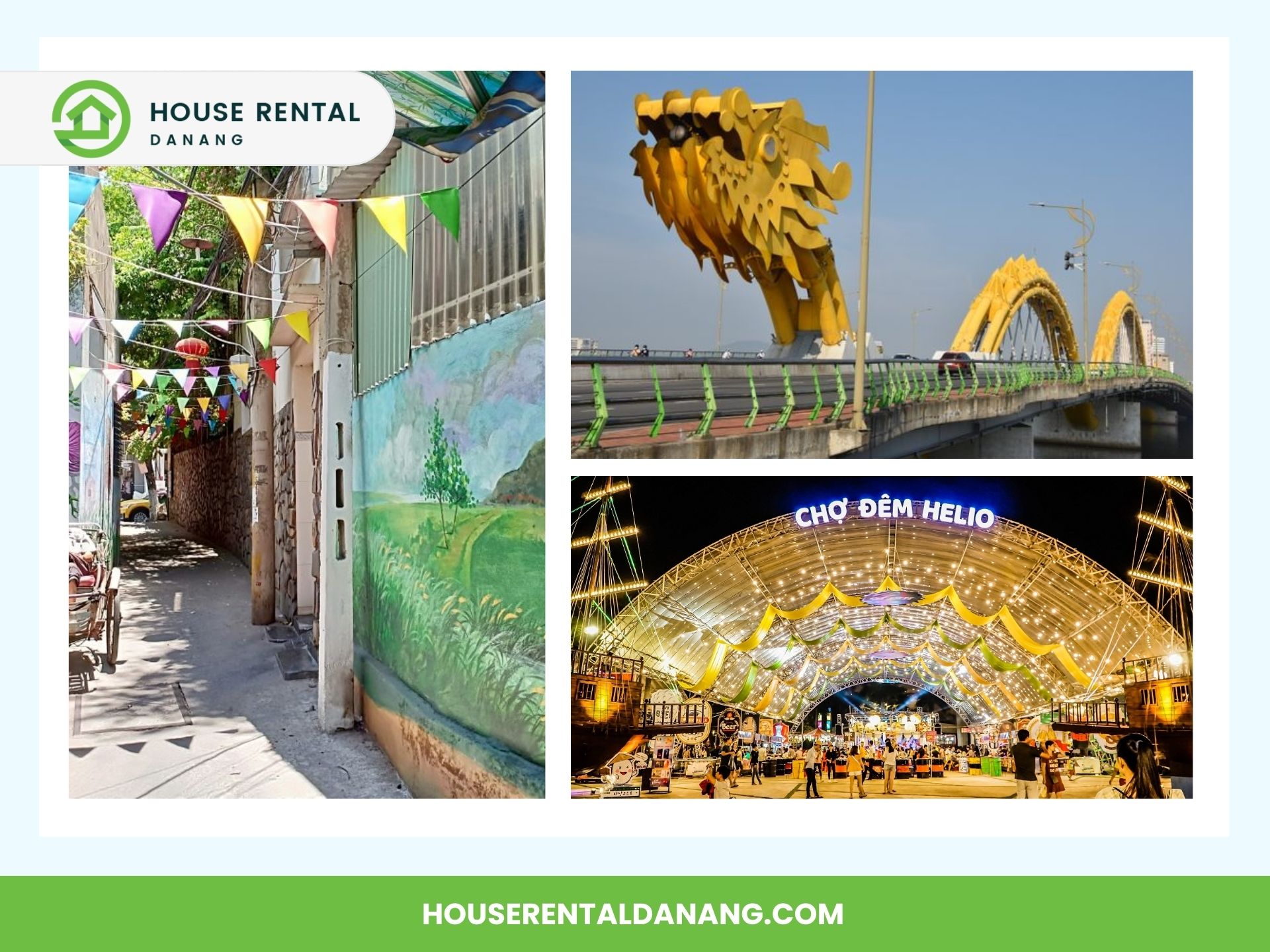
Things to See and Do Near the Museum
After exploring the history of the Museum of Cham Sculpture sits uniquely within Da Nang, visitors can continue their cultural journey by visiting nearby attractions in Da Nang. Dragon Bridge is a popular landmark known for its impressive design and nightly fire-breathing performances. Da Nang Night Market offers an opportunity to experience local cuisine and shop for souvenirs.
An Long Pagoda is another attraction worth visiting near the museum. This beautiful Buddhist temple provides a tranquil escape from the bustling city streets. For art enthusiasts, the museum also offers guided tours and workshops. Da Nang Fresco Village showcases vibrant murals created by local artists.
Additionally, Bach Dang Riverfront offers scenic views and a relaxing atmosphere for a leisurely stroll along the riverbank, which is just a short distance from Vinpearl.
Where to Eat Near the Museum

Where to Eat Near the Museum
After immersing yourself in Vietnamese culture at the Museum of Cham Sculpture, you may find yourself craving local cuisine. Fortunately, there are plenty of dining options with architectural features near the museum sandstone to satisfy your appetite.
Banh Mi Ba Lan is a popular spot known for its delicious banh mi sandwiches filled with various savory ingredients. Huynh Thuc Khang Street offers a wide range of street food roots from central region of Vietnam stalls since 15th centuries serving local delicacies such as banh xeo (Vietnamese pancake) and banh beo (steamed rice cakes), recommended by many a tour guide.
For those looking for a more upscale dining experience, Son Tra Night Market, another highlight when traveling to Da Nang, offers a variety of seafood restaurants where you can indulge in fresh seafood dishes. Fatfish Restaurant & Lounge Bar in the bustling coastal city of Da Nang is another excellent option for seafood lovers seeking a stylish dining setting in the coastal city.
Olivia’s Prime Steakhouse provides a different culinary experience with its selection of high-quality steaks cooked to perfection. If you’re looking for panoramic views of Da Nang while enjoying your meal, Red Sky Bar & Restaurant as part of the coastal attractions. offers breathtaking views along with a diverse menu.
Pizza lovers can satisfy their cravings at Pizza 4P’s Hoang Van Thu, designed by two French architects, known for its delicious wood-fired pizzas made with fresh ingredients, designed by two French architects.
Maps:
Banh Mi Ba Lan: https://maps.app.goo.gl/a4KNp4rd2dhnzh3z6
Huynh Thuc Khang Street: https://maps.app.goo.gl/AWoqLShZKxQwwGhj9
Son Tra Night Market: https://maps.app.goo.gl/Rcg5WCNCxgXPPFN58
Fatfish Restaurant & Lounge Bar: https://maps.app.goo.gl/8ogCmC9uFQLSuzjp6
Olivia’s Prime Steakhouse: https://maps.app.goo.gl/nZkATHKW3SiQV6Ts5
Red Sky Bar & Restaurant: https://maps.app.goo.gl/uC7etAx18HCQsz1e9
Pizza 4P’s Hoang Van Thu: It’s advisable to reserve your table at least 3 days in advance. It’s advisable to reserve your table at least 3 days in advance. https://maps.app.goo.gl/STcP1pgUBeHMs3ZY7
Tips for a Great Visit
- Go Early: The Museum of Cham Sculpture in Da Nang features open-air corridors. Visiting at 8:00 AM ensures you enjoy the cool breeze and beautiful morning light for photography.
- Dress Code: While not strictly a temple, it is a place of cultural significance. Wear comfortable clothes that are respectful (covering shoulders is recommended).
- Combine Your Trip: Located right by the Han River, you can easily combine your museum visit with a walk along the Bach Dang Promenade or a coffee break at the nearby APEC Park.
FAQs
How much is the entrance to the Museum of Cham Sculpture?
As of current information, the entrance fee for the Museum of Cham Sculpture is part of what makes the list when traveling to Da Nang. 60,000 VND for adults and 30,000 VND for children. However, prices may have changed, so it’s best to check the museum’s official website or contact them directly for the most accurate and up-to-date information on the Cham Museum in Da Nang.
What are the Cham monuments in Vietnam?
There are numerous Cham monuments scattered throughout Vietnam, evidencing the rich culture and history of the Champa Kingdom. Some notable ones include:
- My Son Sanctuary in Quang Nam: A UNESCO World Heritage site, this complex features over 70 architectural works ranging from the 7th to the 13th century.
- Po Nagar Cham Towers in Nha Trang: This temple complex was built between the 8th and 12th centuries.
- Po Klong Garai Temple in Ninh Thuan: Constructed in honor of the legendary King Po Klaong Girai, this temple complex showcases the intricate architecture of Cham culture.
- Thap Mam in Binh Dinh: It’s a group of towers that house a variety of Cham artifacts.
Conclusion
The Museum of Cham Sculpture in Da Nang is a place where time stands still. For those seeking cultural depth amidst a modernizing city, this is an unmissable destination. It serves as a bridge connecting the present day with the spiritual heritage of the ancients.
A quality life in Da Nang is not just about modern amenities; it is about connecting with the local soul. If you are looking for the perfect home near this cultural hub, let HouseRentalDanang.com assist you. From riverside condos to quiet studios, we have the ideal space for your new chapter.

